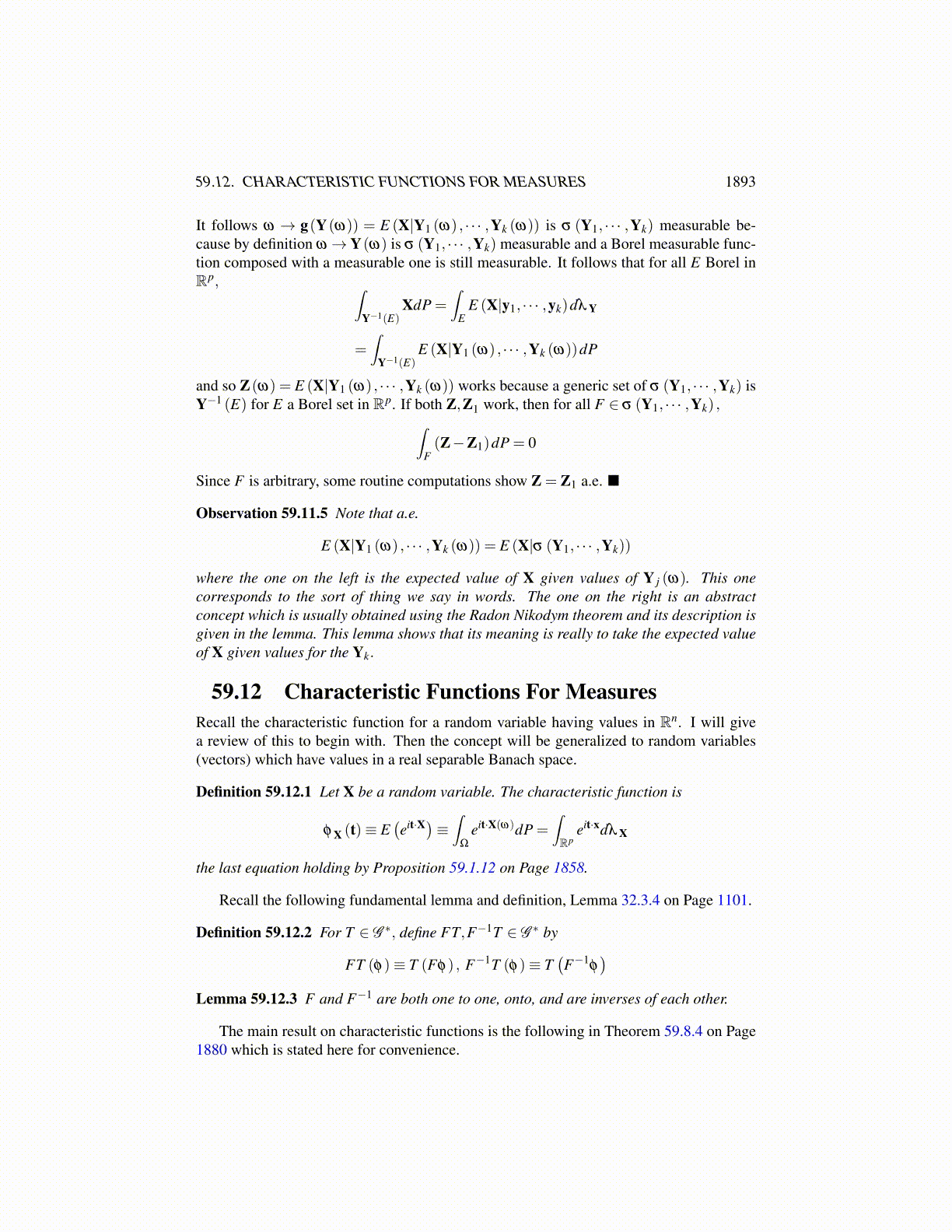
59.11. CHARACTERISTIC FUNCTIONS, INDEPENDENCE 1893
=∫Rpn· · ·∫Rp2
∫Rp1
eit1·x1eit2·x2 · · ·eitn·xndλ X1|x2···xndλ X2|x3···xn · · ·dλ Xn−1 dλ Xn
Next let tn = 0 and applying the above Lemma 59.11.2 again, this implies that for λ Xn−1a.e. xn−1, the following equals 0.∫
Rpn−2· · ·∫Rp2
∫Rp1
eit1·x1eit2·x2 · · ·eitn−2·xn−2dλ X1dλ X2 · · ·dλ Xn−2−∫Rpn−2
· · ·∫Rp2
∫Rp1
eit1·x1eit2·x2 · · ·eitn−2·xn−2dλ X1|x2···xndλ X2|x3···xn · · ·dλ Xn−2|xnxn−1
Let ti = 0 for i = 1,2, · · · ,n−3. Then you obtain∫Rpn−2
eitn−2·xn−2dλ Xn−2 =∫Rpn−2
eitn−2·xn−2dλ Xn−2|xnxn−1
and so λ Xn−2 = λ Xn−2|xnxn−1 for xn−1 off a set of λ Xn−1 measure zero. Continuing this way,it follows that
λ Xn−k = λ Xn−k|xnxn−1···xn−k+1
for xn−k+1 off a set of λ Xn−k+1 measure zero. Thus if E is Borel in Rpn−1 ×·· ·×Rp1 ,∫Rpn×···×Rp1
XEdλ (X1···Xn) =∫Rpn· · ·∫Rp2
∫Rp1
XEdλ X1|x2···xndλ X2|x3···xn · · ·dλ Xn−1|xndλ Xn∫Rpn· · ·∫Rp2
∫Rp1
XEdλ X1|x2···xndλ X2|x3···xn · · ·dλ Xn−1dλ Xn
...
=∫Rpn· · ·∫Rp2
∫Rp1
XEdλ X1 dλ X2 · · ·dλ Xn
One could achieve this iterated integral in any order by similar arguments to the above. ByDefinition 59.9.2 and the discussion which follows, this implies that the random variablesXi are independent.
Here is another proof of the Doob Dynkin lemma based on differentiation theory.
Lemma 59.11.3 Suppose X,Y1,Y2, · · · ,Yk are random vectors X having values inRn andY j having values in Rp j and
X,Y j ∈ L1 (Ω) .
Suppose X is σ (Y1, · · · ,Yk) measurable. Thus
{X−1 (E) : E Borel
}⊆
{(Y1, · · · ,Yk)
−1 (F) : F is Borel ink
∏j=1Rp j
}
Then there exists a Borel function, g :∏kj=1Rp j → Rn such that
X = g(Y1,Y2, · · · ,Yk) .